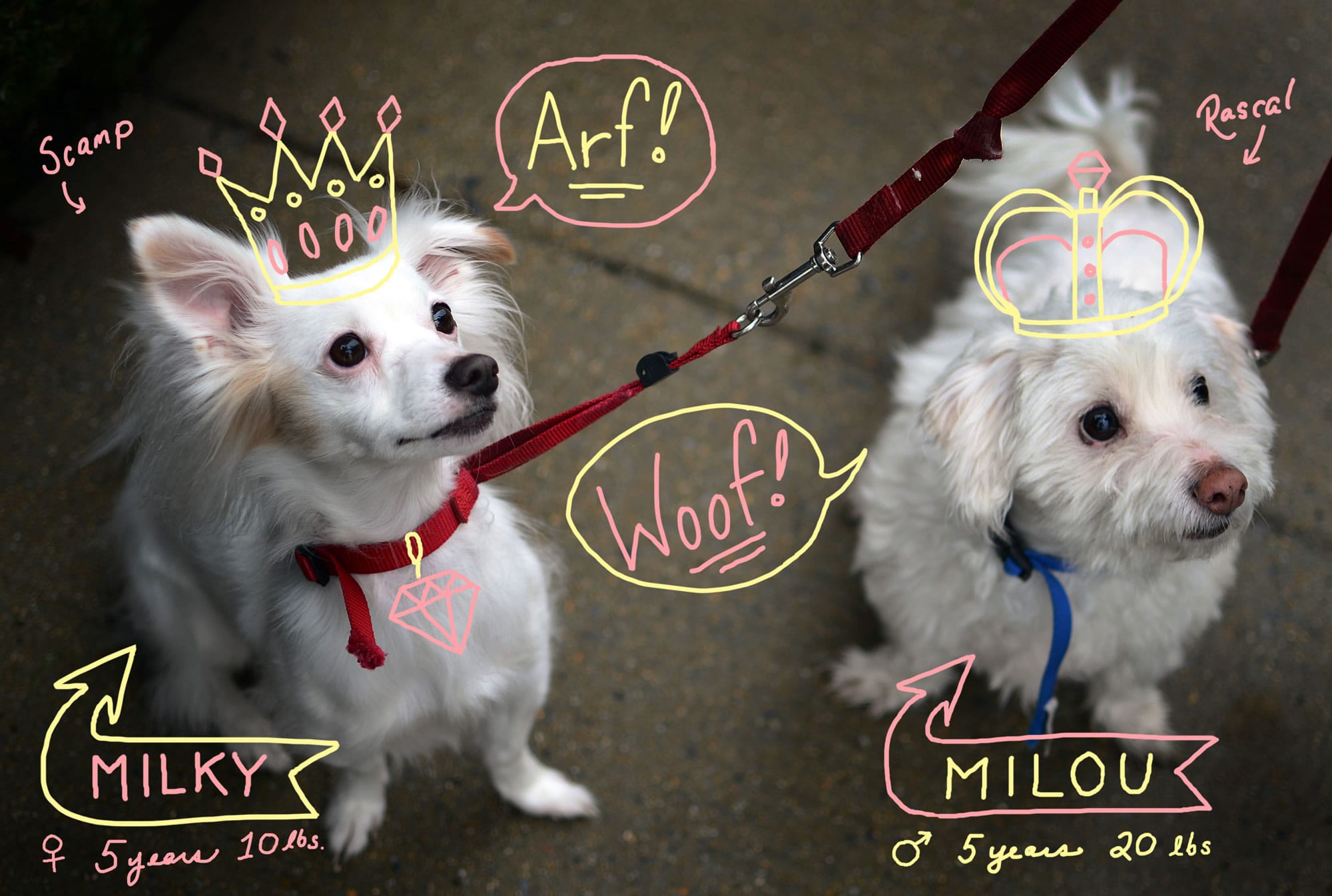The two dogs faced each other from across the sidewalk, like cowboys in a spaghetti western shootout. One was Milky, a 5-year-old fluffy white Coton de Tulear mix adopted by my fiancé, Scott. The other was a comically fake stuffed dog on a leash handled by our trainer, Jamie Eaton of Spot On Training. It was the final evaluation in a series of tests to diagnose behavior problems in Milky and Milou, our other Coton de Tulear.
We approached Eaton and her “dog,” getting bewildered glances from the neighbors, and Milky began a familiar routine: straining at the leash, growling, then launching into full-blown meltdown mode, pulling and barking. Only when she was allowed to approach the stuffed dog did she calmly begin to sniff out the traditional dog greeting, right at the fake dog’s behind.
So how did we get to this point? Our dogs didn’t always act this way. Five years ago, Scott was given the dogs — the breed is a descendant of bichons whose name means “cotton” — when he was working as a French translator in Madagascar for a public health project. After they got their shots and flew home with him, Milky and Milou spent afternoons by the water in San Francisco, happily playing with other pups at the dog run.
But once they moved to Washington, Scott’s law school schedule left little time for dog parks. The pair grew suspicious of other dogs and didn’t greet them in their once-friendly way. They became the enemy of every Chihuahua and toy poodle on the block, even barking at dogs twice their size. After trying a few ineffective training methods on our own, we gave up and avoided other dogs, crossing the street if we saw one coming.
But city living is especially challenging when you have a difficult dog, so it was time to bring in a professional. Because our dogs were so reactive to other dogs, a class was out of the question. Instead, we sought a behavior consultation, a session with a professional trainer or animal behaviorist who diagnoses tricky problems that go beyond basic obedience and creates a behavior modification plan to change the dogs’ interactions. An added plus: The trainer or behaviorist comes to your home to assess the dog in its regular environment.
We chose Spot On in Washington’s Capitol Hill neighborhood because of positive online reviews, proximity and price, and a conversation with owner Heather Morris, who explained the behavior consultation and its benefits.
Our behavior consultation with Eaton felt like therapy, or maybe confession. Our sins as dog owners came pouring out: the time they got in a spat with each other and Milou nipped Milky’s foot. How we used to let Milky sleep on the bed. Therapy is a common analogy among clients, said Eaton, who has even had clients cry during sessions.
“The dog is a member of their family,” she said. “They take it to heart and they get very upset if there’s some sort of behavioral issue, and they think that maybe it reflects upon them.”
Hilary Bolea, a certified professional dog trainer and owner of Old Town Dog Behavior in Alexandria, Va., used to be a legislative assistant on Capitol Hill, and she said her experience in politics has informed her work with dogs. In both of her professions, she said, “It’s all about persuading someone to do something they don’t want to do, in an area where they feel they know more than you. You have to leave enough of a window to let them believe they came up with the idea themselves.”
Training and desensitization, which gradually exposes the dog to its triggers to reduce sensitivity and fear, take time and patience on the owner’s part and require following instructions and doing your homework. Don’t expect your dog to be instantly changed, either.
Eaton gave us daily homework, which changed after each session. We clicker-trained our dogs for obedience commands, which taught them to associate a clicking sound with good behavior and treats. We created food puzzles for them by stuffing treats in toys, which alleviated their inactivity and boredom.
We aren’t far enough in our training yet to prevent Milky and Milou from barking at other dogs, but at least we’re able to get them to stop right away — a good sign of progress. We can tell they’re happier, and we better understand the way they think, too. It’s not uncommon for the owners to end up learning more than the dogs, Eaton said.



